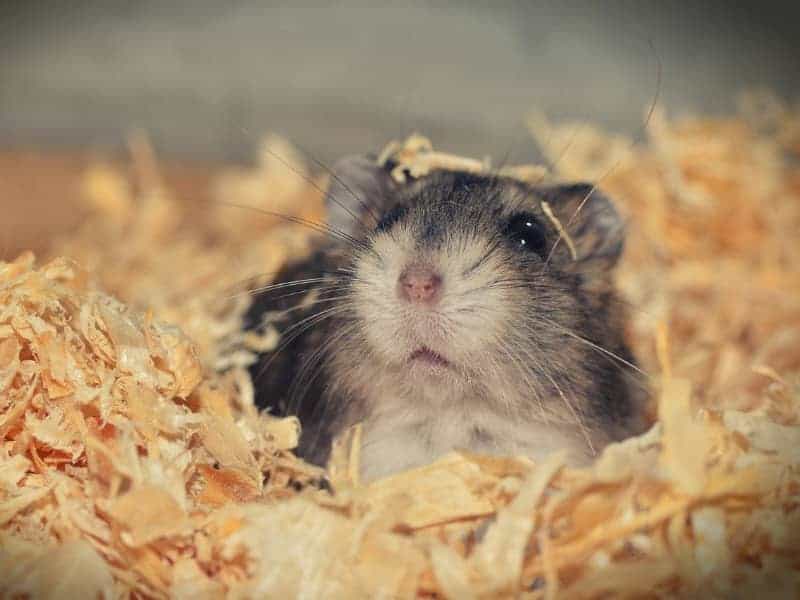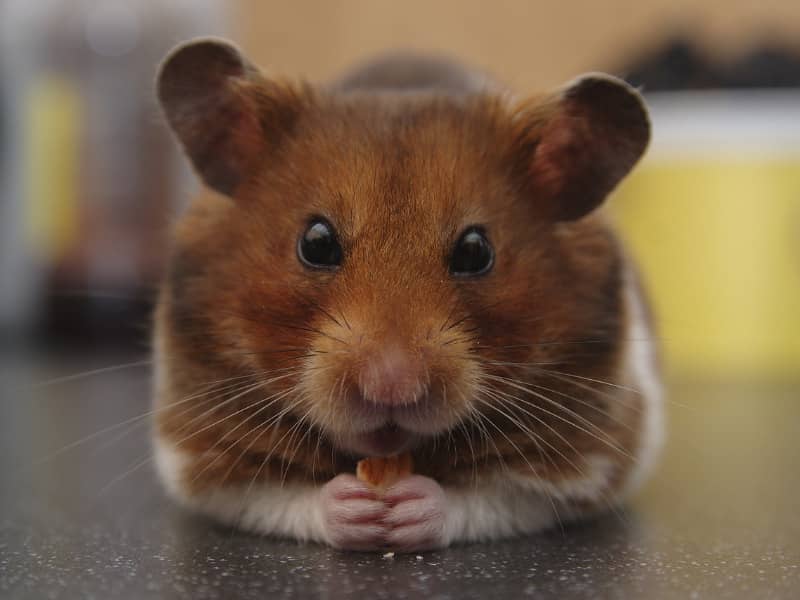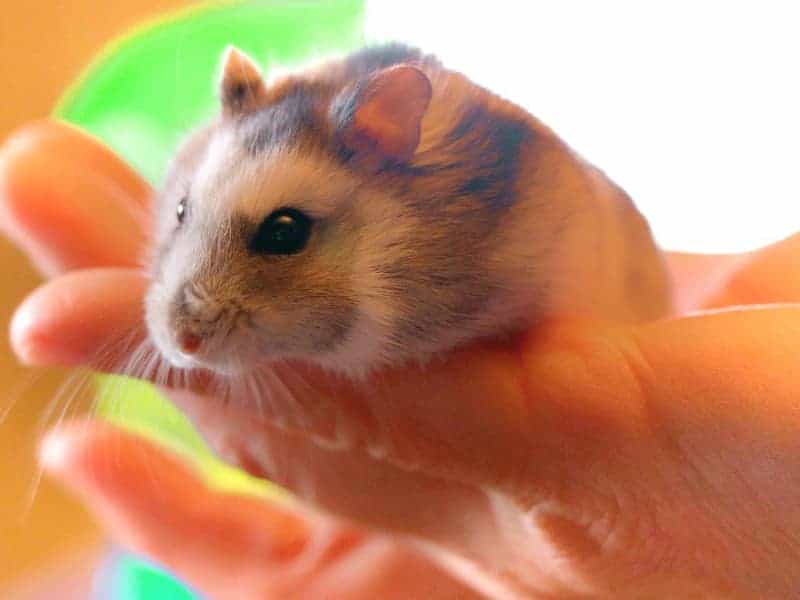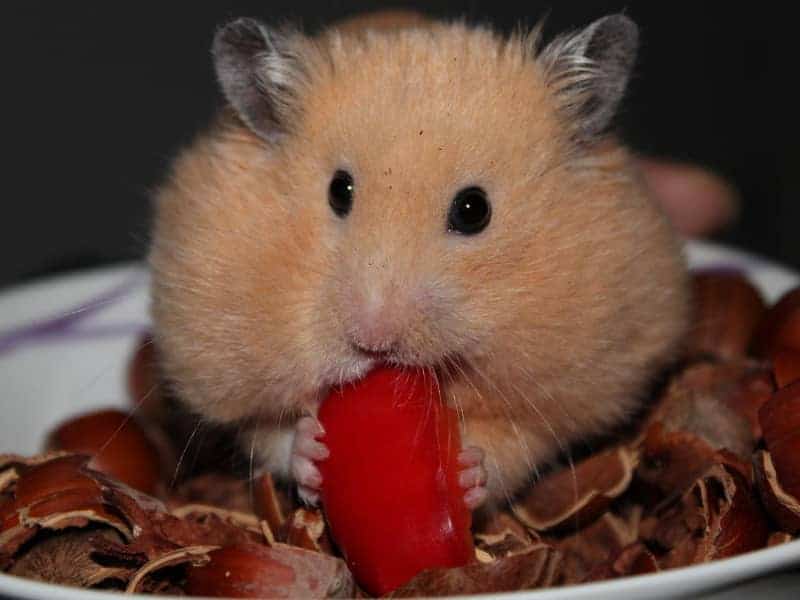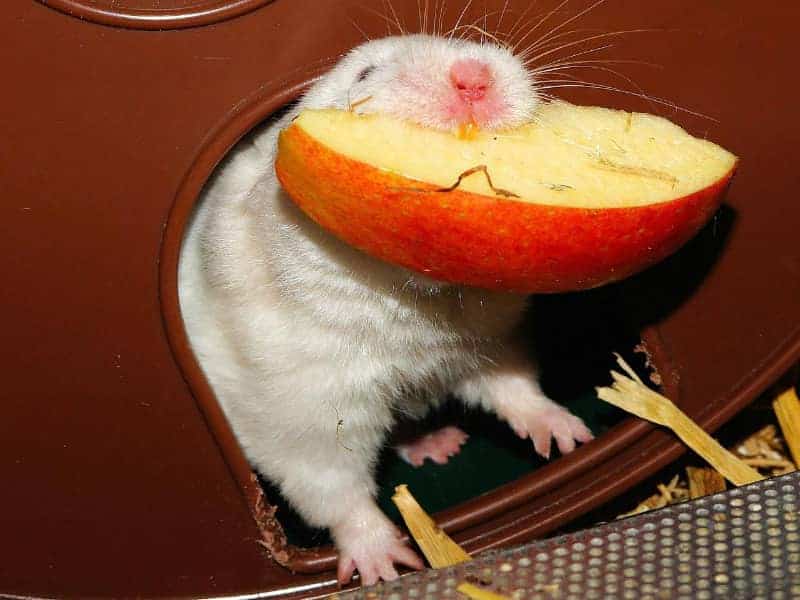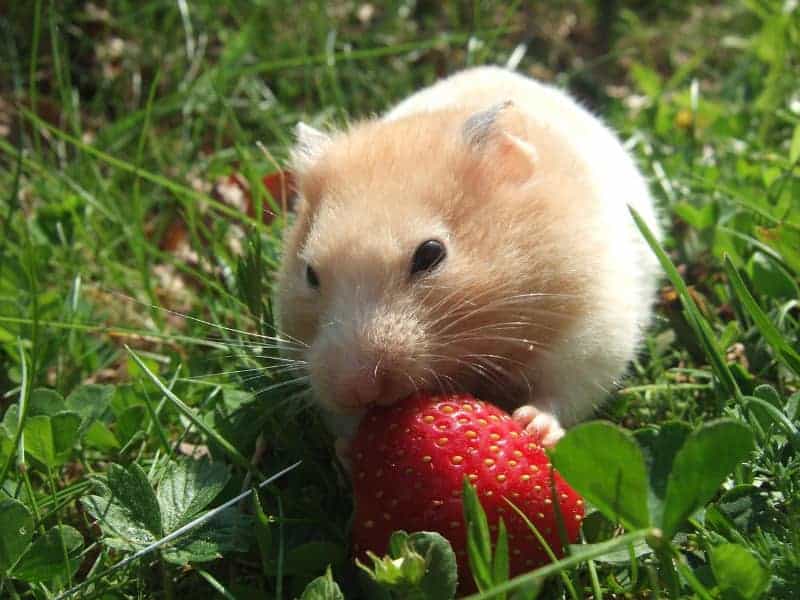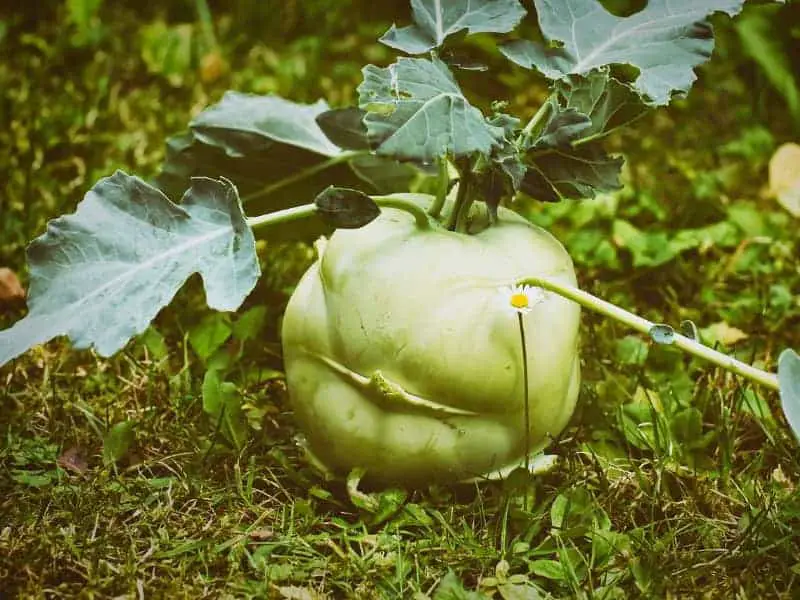
Are hamsters allowed to eat kohlrabi?
Can a hamster eat kohlrabi? Yes, we can tell you that kohlrabi can be eaten by your hamster. However, care must always be taken with cabbage varieties, as kohlrabi is one. You can find out why in our article.
How to feed my hamster kohlrabi?
Before you give your hamster kohlrabi, you should wash it thoroughly. This is best done with lukewarm water. Lukewarm because too hot water does not remove any pesticides from the surface, but they penetrate into the vegetables. Cold water also works, of course, but slightly warmed, ensures that adhering soil dissolves more easily.
Your hamster should only eat small amounts of kohlrabi. The ideal portion size for golden hamsters are cubes with an edge length of about 1 cm. For dwarf hamsters, the amount is of course smaller. Here a cube of 0.5-0.7 cm edge length is sufficient. By the way, we peel the kohlrabi before feeding, others find this again unnecessary. It's best to try it out for yourself and see what your animal thinks of it.
What to consider when feeding kohlrabi for the first time?
Hamsters that have never eaten kohlrabi or other types of cabbage may react to cabbage with bloating, diarrhea and abdominal pain. We have indicated above amounts that you can feed your hamster, but when acclimating to cabbage, you should cut these amounts in half again. After feeding, you should closely monitor your hamster for any of the above symptoms.
If 2-3 hours after feeding, your animal shows no signs and walks normally through his enclosure, then you do not have to worry. It seems that your hamster tolerates kohlrabi well and you can offer it regularly. Note, however, that the feeding amount should be increased slowly to avoid complications.
The slow increase should be done because hamsters rarely find cabbage or similar vegetables in the wild. So your body has to get used to this food slowly. Therefore, you should offer kohlrabi to your animal 1-2 times a week at most, so that it does not get health problems from overfeeding cabbage.
Also observe whether your hamster might drag the kohlrabi to one of its food hiding places to eat it later. Many animals leave food in their depots for days or even weeks. Here you need to check if your animal is doing this and possibly dispose of leftover food that could go bad, or already has. We recommend checking every 2-3 days.
How much kohlrabi can a hamster eat?
Here the size of your animal is crucial, because understandably, a portion for the dwarf hamster may not be as large as for a gold hamster. For this reason, the amount of food must be adapted to the body size of your animal. But also the age plays a role, as we have already described above, a golden hamster used to cabbage should be offered a cube with an edge length of 1 cm.
It is best to stick to the feeding recommendation, which we have described in detail above in the first feeding. It is generally important for hamsters that fresh food is only ever given as supplementary food to their grains and seeds. Because in its normal habitat it rarely finds fresh green food and feeds on seeds and insects.
Are hamsters allowed to eat kohlrabi leaves?
Yes, your hamster may eat the kohlrabi leaves. The leaves are perfectly tolerated by most animals. Not all hamsters like these leaves, however, we do not know of any case where a hamster did not tolerate the leaves. But also with the leaves you have to pay attention to the quantity. Because of the high water content, too many leaves can cause diarrhea in your animal.
Therefore, after feeding, closely observe how your hamster behaves and reacts to the new food. Do not forget to check the hiding places regularly to remove any spoiled food remains.
Should hamsters eat kohlrabi?
Hamster experts argue about this again and again, we are convinced that you have to try out whether your animal tolerates the food. Then, in our opinion, nothing speaks against that hamsters can occasionally get a piece of kohlrabi. Especially the leaves we consider a healthy and varied complementary food, which should not cause any problems.
But as always, it is important to pay attention to the right amount, because what is good in normal quantity, can cause problems if too much.
Are dwarf hamsters allowed to eat kohlrabi?
Of course, dwarf hamsters can also eat kohlrabi. Again, the principle is to adjust the amount of food to the size of the animal. You can find detailed information about the amount in the sections "First feeding" and "How do I feed...". If you follow our advice written there, then your dwarf hamster will have no problems with the kohlrabi.
Are hamsters allowed to eat kohlrabi every day?
No, you should not offer your animal kohlrabi every day. Neither from the leaves nor from the tuber. The water content of the kohlrabi and the leaves would be too high and the probability that your animal gets malnutrition or diarrhea would be too high. Dehydration from diarrhea can quickly lead to life-threatening conditions in a hamster.
Are hamsters allowed to eat kohlrabi? - Conclusion
Kohlrabi can be a small part of the diet for the hamster. Many hamsters love to nibble on hard pieces of kohlrabi and others do not. Almost all, however, like the leaves, but even here there are exceptions. When feeding, kohlrabi should take up a maximum of 5 % of a daily meal and should be offered no more than twice a week. Then you can be sure that your hamster will absorb the food well and benefit from it.
Author

-
Garden animal - A life with nature
Welcome to my animal blog! My name is Dirk and I am happy to take you on my journey through the fascinating world of animals and gardening.
Born 54 years ago, I have had an insatiable curiosity for the animal world around me since childhood. Although I have moved professionally in other industries, my true passion has always been animals and nature. It is remarkable how a small garden has become such an important part of my life.
Many of my fondest memories are associated with the animals that share our home. Whether it's the curious squirrels that scurry across the trees in the morning, the colorful variety of birds that visit our feeders, or the busy bees and butterflies that pollinate our flowers, every moment with them is invaluable to me.
This blog is my contribution to share my experiences, discoveries and insights with like-minded people. Here I will share stories of unforgettable encounters with animals, give tips on gardening and creating wildlife-friendly habitats, and take you on my journeys through nature.
Thank you so much for being here!
Cordial,
Dirk aka garden animal
Last posts
- 27. February 2024PetsVeganes Hundefutter – Grün und Gesund?
- 18. January 2024ChickensOregano für Hühner
- November 27, 2023HamsterDiurnal hamsters
- November 24, 2023HamsterHamster hammock

